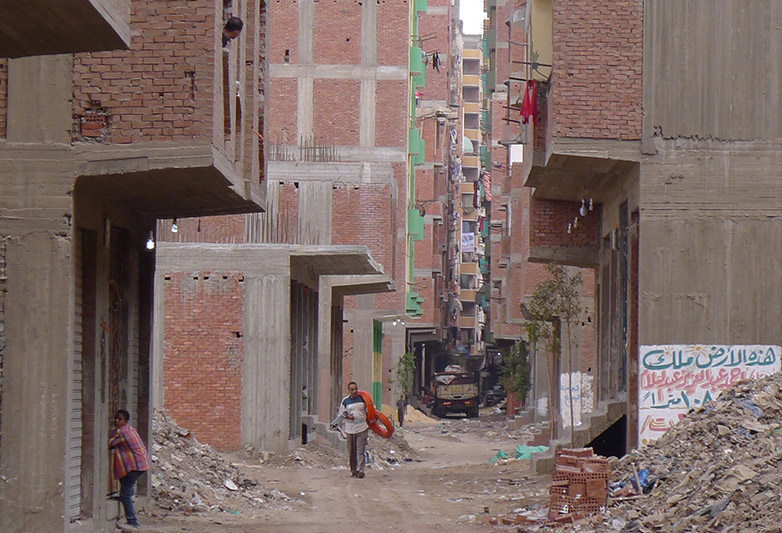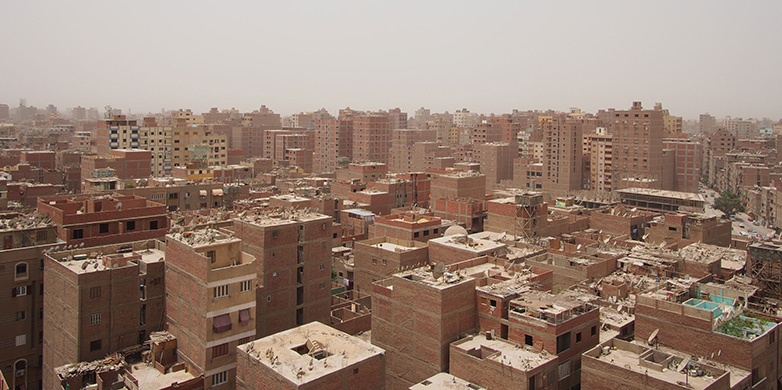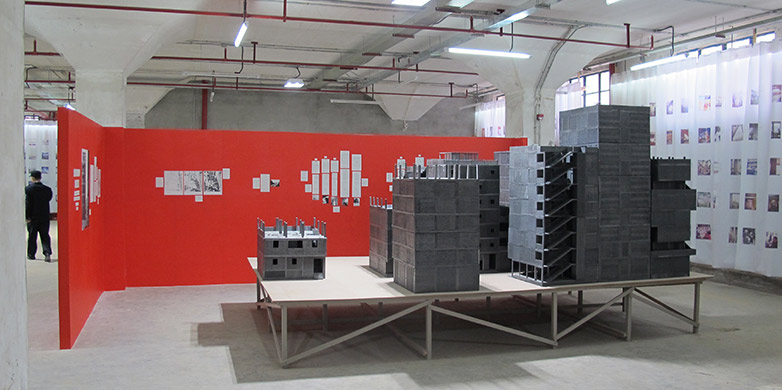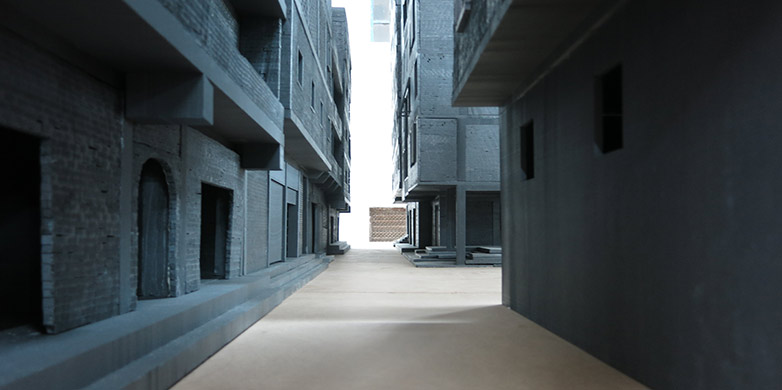Radical Cairo in Shenzhen
It is not too often that Cairo’s informal settlements are hosted at an international architecture event, especially not as a positive case. This year, the “informal” area of Ard-El-Lewa is prominently featured at the Bi-City Biennale for Urban Development and Architecture in Shenzhen, in the Radical Urbanism section.
In many large urban areas, settlements develop independently from any official city planning. The informal mode of urbanization in Cairo indeed appears radical because it alters conventional ownership structures and questions the validity of formal planning. Informal construction at this stage of development calls for a reassessment of the way in which the discipline of architecture reacts to forces of urbanization operating beyond the usual legal framework. Persistent urban growth shows that, while lacking public services and infrastructures, informal settlements are nonetheless successful in generating dense and affordable housing. However, a constructive governmental policy to legalize these settlements has yet to materialize, and their potential is not understood.
A formal look into informal settlements

The ETH Zurich Master of Advanced Studies program in Urban Design at the chair of Marc Angélil initiated an investigation of informal settlements in Cairo, looking into designs for affordable housing units in the neighborhood of Ard-el-Lewa, an informal area of Cairo. The results of our research are featured at the Bi-City Biennale of Urbanism/Architecture in Shenzhen: “externe SeiteRadical Cairocall_made: From agrarian land to new urban forms in Cairo“. [2] At this year’s Biennale, which closes next Sunday, the ETH professors of architecture Alfredo Brillembourg and Hubert Klumpner are part of the four-person curatorial team (see this article and this interview on ETH News).
On display in Shenzhen
The exhibition displays existing typologies of buildings in the area, their flexibility and qualities, along with selected projects which demonstrate how rearranging existing building components can lead to new urban forms, and better living conditions. A red wall shows the growth of the area, case studies of existing buildings and projects, and surrounds a large 1:20 model of the studied urban area developed over agrarian land. The model displays remains of agrarian land, property lines and irrigation channels as the base for later urbanization, as well as the existing streetscape with established housing types of concrete frames and brick infill. Alternative projects developed by the MAS Urban Design for an innovative architecture are positioned on site.
The MAS Urban Design is working against the negative perception attached to informal areas, and for a stronger involvement of architects and designers in these vibrant, inclusive and inventive neighborhoods. Ultimately, it is calling for governmental awareness to legalize, recognize and integrate these areas as an integral part of the city.
Outlook: Biennale Architettura 2016
The 15th International Architecture Exhibition – the externe SeiteBiennale Architettura 2016call_made in Venice – will open from Saturday 28 May to Sunday 27 November 2016. The exhibition is curated by Alejandro Aravena and entitled “Reporting from the Front”. Among participants from ETH are the Block Research Group (Professor Philippe Block, with two projects), Herzog & De Meuron and Professor Christian Kerez, who will design the Swiss Pavilion. The MAS Urban Design will be present in the Egyptian Pavilion.




